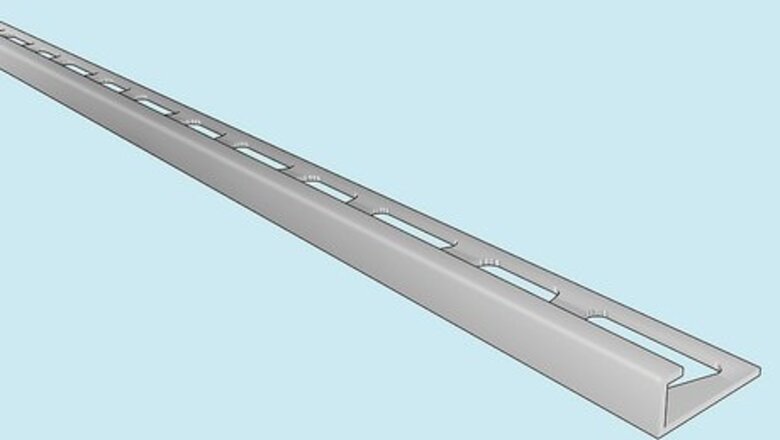
views
- Use Schluter trim to conceal the unfinished edges of your shower niche tiles and provide a sleek frame for the niche.
- Make mitered cuts into the niche tiles and the surrounding wall tiles if you want a seamless look that helps the niche blend in.
- Use full-thickness natural stone or glass tiles if you want to put the thin edges of the niche tiles on display, or consider having bullnose tiles custom made.
Adding Metal (Schluter) Trim
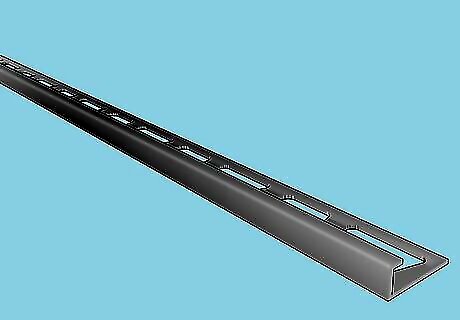
Choose metal trim for a modern look that gives your niche a sleek frame. Metal trim for tile, often referred to by the brand name Schluter trim, offers both a modern look and a distinctive framing device for a shower niche. Part of the trim is embedded under the tile in the niche, while the visible part defines and protects the corners where the niche and wall tiles meet. Installing Schluter trim is also more DIY-friendly than some of the other bullnose alternatives. An 8 ft (2.4 m) section of basic Schluter trim—which should be enough for most shower niches—starts at around $10 USD, making it an economical option as well.
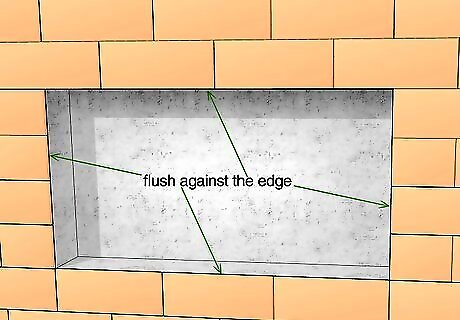
Install the surrounding wall tile flush against the edge of the niche. In other words, the wall tiles don’t need to overlap the edge of the shower niche opening and don’t need to provide any gap. Instead, bring the surrounding tiles right up to the edges of the opening for the (as of yet un-tiled) shower niche. Installing a shower niche isn’t typically a beginner’s tiling job, so we’re going to assume in this article that you don’t need detailed tiling guidance. If you’re new to laying tile, though, wikiHow has your back! We cover the basics on installing tile, tiling a wall, tiling a shower, and finishing tile edges, to name just a few helpful articles to check out.
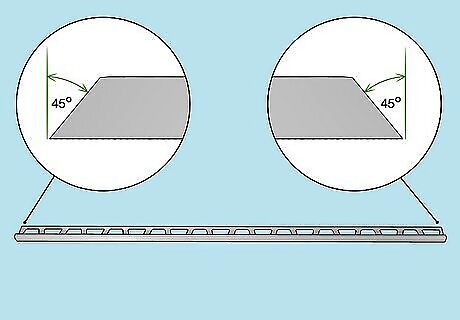
Cut the Schluter trim to fit the perimeter of the niche. You’ll have to make 45-degree cuts for a typical rectangular (or square) shower niche. Use aviation snips (tin snips) to cut away the trim’s “legs” (the flat, perforated area that you’ll embed in the thinset mortar) at each cutting location. Then use a table saw or hacksaw to make the 45-degree cuts through the visible part of the trim. Cut slowly and carefully so you don’t damage the trim. Once you finish cutting, dry-fit the trim pieces in the niche with masking tape to confirm that they fit. Remove the trim and tape when you’re done.

Embed the legs of the trim pieces in place with thinset mortar. Apply the thinset all around the inside edge of the perimeter of the niche to a thickness of around ⁄8 in (3.2 mm). Press the legs of each piece of trim firmly into the thinset, making subtle adjustments in position as needed by wiggling, sliding, and tapping the trim pieces. Wipe off any excess thinset on the display side of the trim. You can use strips of masking tape on the face of the trim to help hold it in position while you continue working, especially at the corners. When installed, the display side of the trim will butt up against the surrounding wall tiles, and slightly overlap the perimeter edges of the niche. This overlap will cover the side edges of the niche tiles.
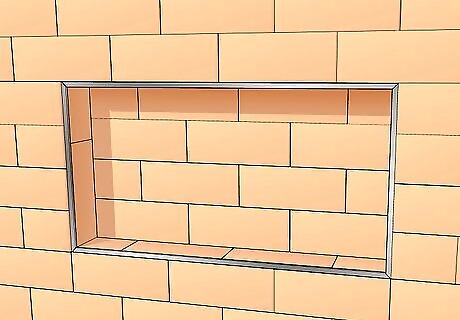
Set the niche’s bottom, side, top, and back in place. Apply your bed of thinset—roughly ⁄8 in (9.5 mm) thick for ⁄4 in (6.4 mm) thick tile—on the bottom of the niche and then nestle the ledge tile into place. Slide the front of the tile right up against the backside of the display side of the trim. Repeat the process with the side tiles, then the top tile. Install the back tile last. Press the tile down into the thinset more firmly if it’s slightly higher than the top edge of the display side of the trim. Alternatively, if the tile is a little too low compared to the top edge of the trim, remove the tile and add a bit more thinset.
Using Mitered Tile
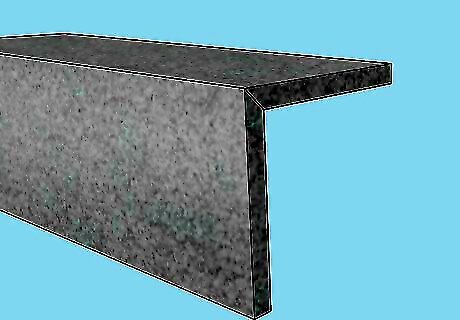
Choose mitering for a clean look that blends the niche into the wall. Mitering involves cutting the edges of two perpendicular tiles (such as the tile on your shower wall that meets one of the side tiles of your niche) at roughly 45 degree angles so that they line up together without exposing their sides. Mitering around the perimeter of your niche gives it a more modern look than bullnose tile, and is a great option if you want the niche to blend into the surrounding wall tiles.
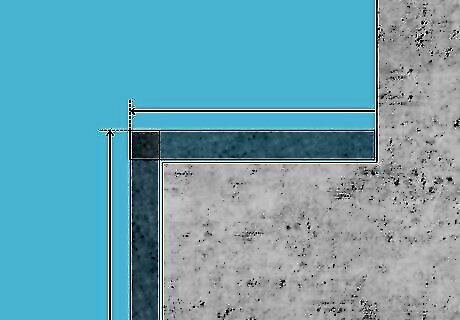
Plan to miter and overlap the surrounding wall tiles before installation. Mitering a niche needs to be planned out from the beginning of the shower tiling job. For one thing, the tiles surrounding the shower niche—not just the ones in the niche—need to be mitered beforehand. Additionally, those same surrounding tiles, when installed, need to overlap the edges of the niche by the thickness of your tile (plus the thinset mortar underneath), so that the mitered wall and niche tiles meet at a 90-degree angle. So, when laying out your shower tile design, factor in this overlap for the tiles surrounding the niche. For instance, if you’re using ⁄4 in (6.4 mm) thick tiles with a ⁄8 in (9.5 mm) bed of thinset underneath, the surrounding wall tiles need to overlap the perimeter of the niche by ⁄8 in (16 mm).
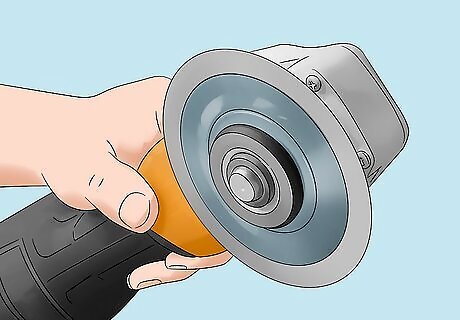
Use an angle grinder to most efficiently cut miters in tile. While it’s usually recommended to cut tile with a tile cutter, a wet saw, or tile nippers, none of these options does a good job of making miter cuts. Instead, it’s best to use an angle grinder equipped with a diamond blade. Yes, this means cutting the miters free-hand, which takes some practice (and at least a few ruined tiles). But it’s really the way to go here!
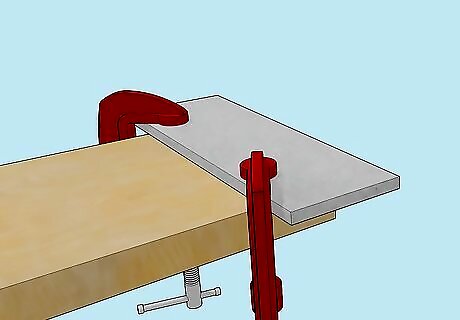
Clamp down a tile and prep for cutting with the angle grinder. Using an angle grinder to miter tile is all about working safely and incrementally, removing the material bit by bit. Always start by putting on work gloves, long sleeves and pants, hearing protection, and safety goggles (or, better yet, a full-face shield). Once you’re geared up, carefully clamp down the tile so that the edge you're mitering is slightly overhanging the work surface. Read all instructions carefully before using a grinder for the first time.
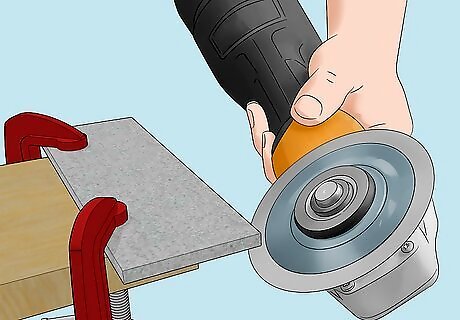
Position the grinder for cutting and bring it up to speed. Grip the grinder with both hands, one hand on the side handle. Hold the flat side of the circular blade at just slightly more than a 45 degree angle compared to the underside of the edge of the tile. (Make your best estimate of the angle.) Turn on the grinder and let it come to full speed. Take your time getting the grinder in the right position before you start cutting.
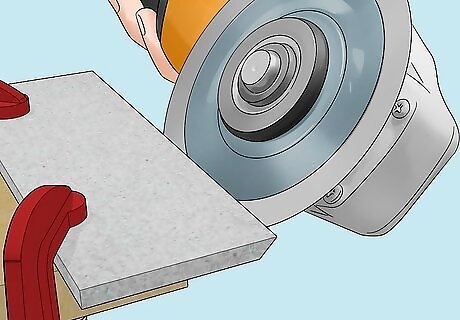
Cut away the underside of the tile’s edge without over-grinding it. Bring the flat side of the blade up against the underside of the tile edge, applying gentle, steady pressure. Move the grinder back and forth to slowly and evenly remove the tile material. Instead of bringing the tile to a sharp edge along the top, leave about one-fourth of the thickness of the tile as-is along the mitered edge. Otherwise, the mitered edge will be too fragile and will break easily.
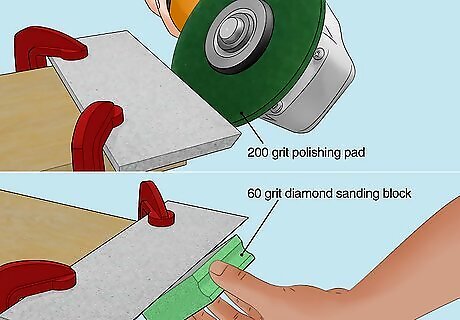
Smooth out the miter with a polishing pad and sanding block. While the tile is still clamped down, switch out the grinder’s diamond blade for a 200-grit polishing pad. Use the pad to smooth out and fine-tune the miter cut. Finish up the process by going over the miter cut with a 60-grit diamond sanding block.
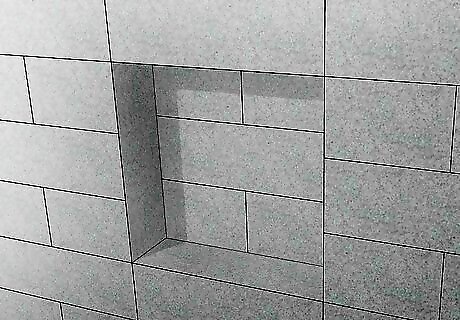
Install the mitered tiles surrounding and then inside the niche. Start with the surrounding wall tiles, installing them as normal. Then, install the niche tiles in the following order: bottom (ledge), back, sides, and top. Use a little more or less thinset mortar as needed on the niche tiles in order to line them up perfectly with the surrounding wall tiles. We’re going to assume you’re not a complete tiling novice if you’re tackling a shower niche. For help with tiling basics, though, check out our articles on installing tile, tiling a wall, tiling a shower, and finishing tile edges.
More Bullnose Alternatives
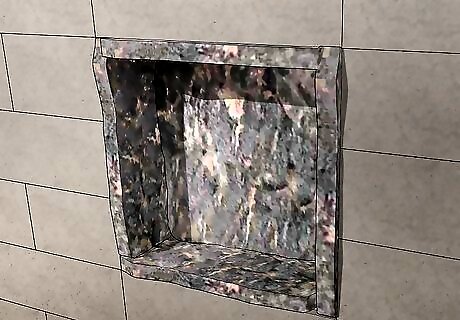
Natural stone tile. While regular (not bullnose) ceramic tiles have unfinished edges that’ll stick out like a sore thumb on your shower niche, natural stone tiles have the same appearance on the edges as on the “show” side. That means you can use natural stone tiles for the top, sides, and ledge (bottom) of your niche and have the exposed edges serve as a “frame” for the element. You might use the same tile for the entire shower (if you want the niche to blend in), or just use it for the niche (if you want it to stand out).
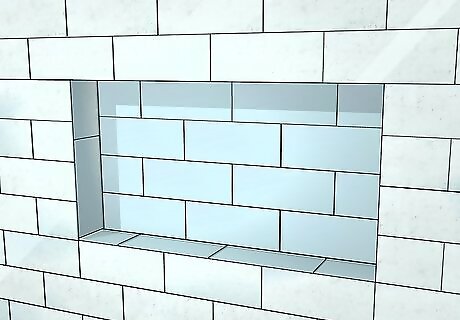
Glass tile. Like natural stone tiles, glass tiles have a consistent look through their entire thickness, meaning it’s fine to expose the sides of the tiles as a frame for your shower niche. Here again, you can use the same tile throughout your shower or pick a distinctive tile just for your niche.
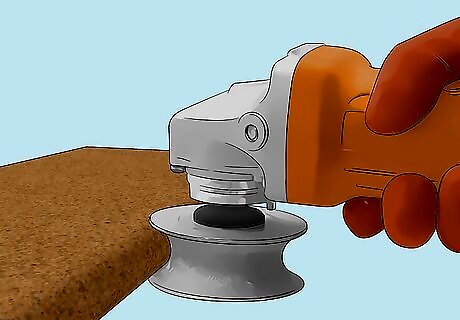
Custom-made bullnose tile. Rather than not wanting to use bullnose tile for your shower niche, perhaps your problem is that there isn’t an available bullnose version of the tile you want to use. In that case, it is possible to turn a standard tile into a bullnose tile—but only if it’s a tile (like glass or natural stone) that’s the same all the way through, as opposed to a typical clay tile with a glazed surface. While this is in theory a task a skilled DIYer can tackle if they have the right tools, you’ll almost certainly want to have a professional make the bullnose tiles for you.

















Comments
0 comment